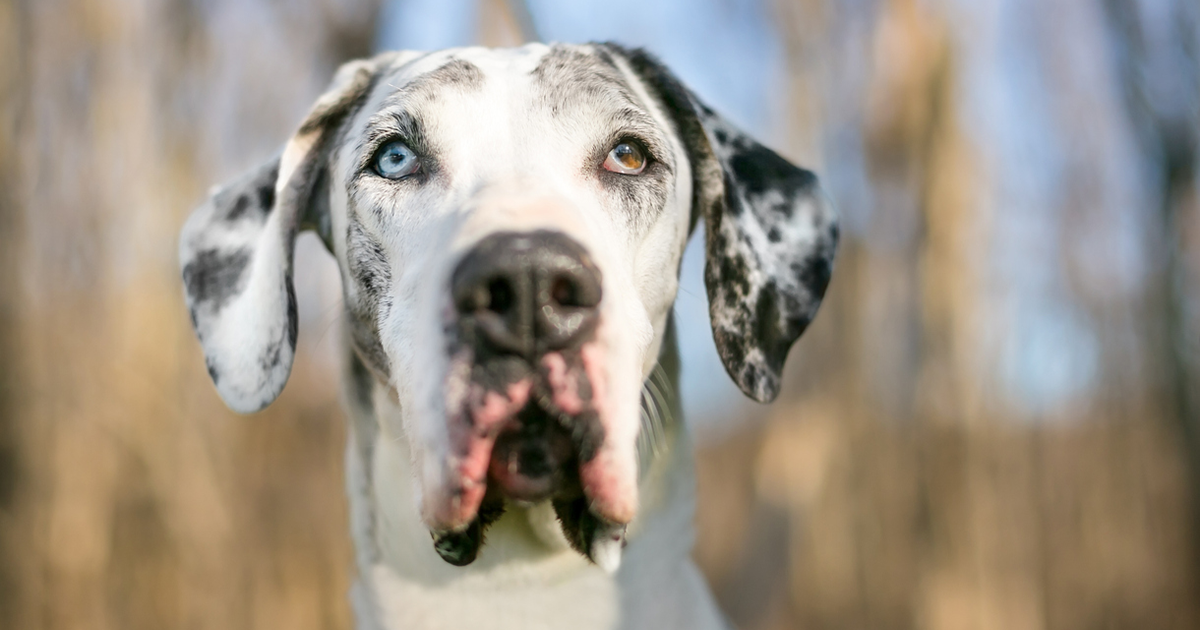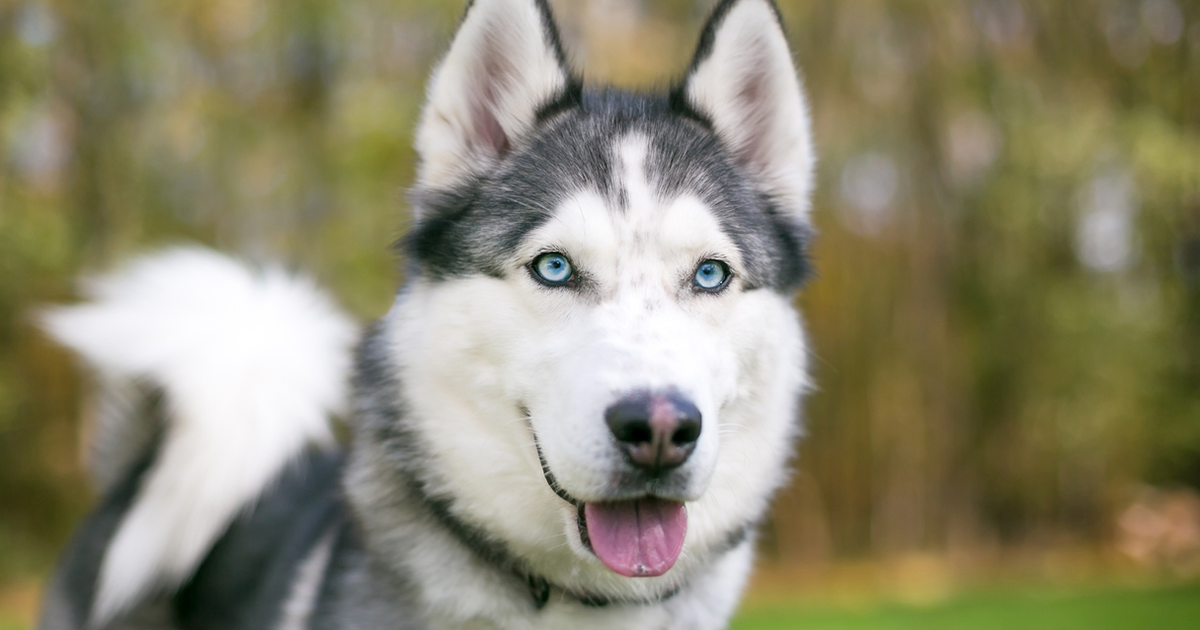***Looking for a gift to blow your new dog’s mind? Spoil them with a BarkBox! Every month BarkBox delivers 2 original toys, designed in-house, 2 full bags of all-natural treats, and a chew. Sign up here and receive a free extra toy every month. <– This deal is worth up to $120 in value if you sign up for a 12-month subscription! 🙂
Dogs and children go together like peanut butter and jelly!
Growing up with a pup helps teach kids some of life’s most important lessons like empathy for others and respecting personal space.
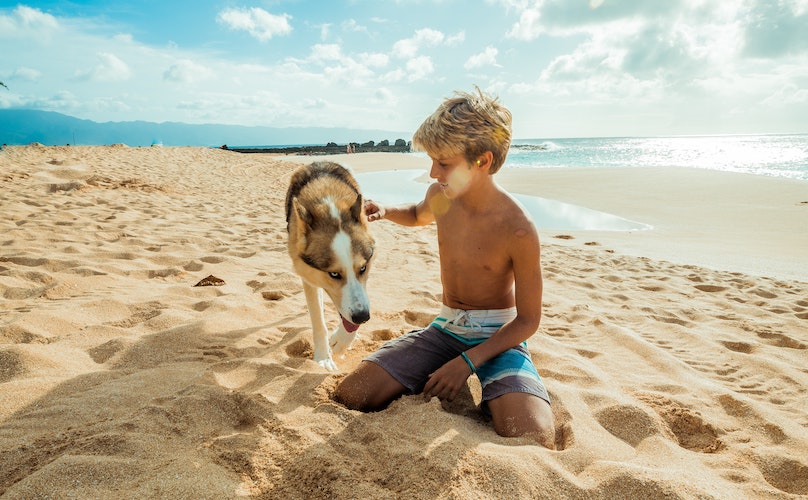

Even better, dogs are good for your children’s health. Studies show living with dogs reduces a child’s chances of developing allergies, asthma, eczema, and obesity.
Despite the wonderful benefits dogs offer, it is important to remember they are animals, not furry humans.
Kids can be loud, grabby, and unpredictable, traits dogs find scary and threatening. If they are not taught how to behave around dogs it could be a recipe for disaster. According to the American Veterinary Medical Association (AVMA):
“Children are the most common victims of dog bites and are far more likely to be severely injured.”
How Do I Teach My Children To Respect The New Dog?
Have “the talk” with your children. No, not that talk, the one about respecting other living things. If they are too young to comprehend the importance of respecting an animal’s personal boundaries, they are too young for a dog. Period.
Tips For Introducing Dogs And Children
While talking is an important first step, putting the tips below into practice will further reinforce the importance of respecting dogs.
Teach your child the proper way to approach a dog.
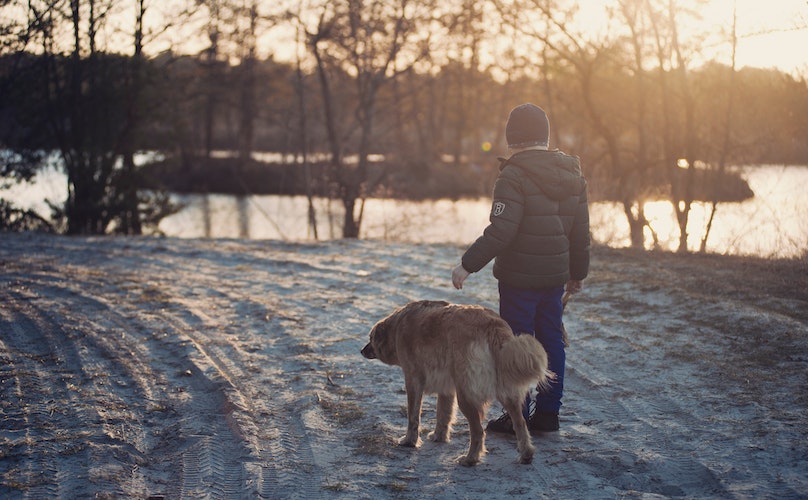

Be sure your child knows the proper way to approach an unknown dog. Teach him or her to approach from the side and stand quietly, allowing the dog to come the final few feet on its own. Let the dog sniff the child’s hand (fingers curled inward and never in the dog’s face).
It is important to let the dog decide whether or not to interact on its own terms. Some dogs may not want to be touched or played with, and children must be mature enough to understand and respect this.
Have your child practice with other dogs before bringing home your own pet.
Once you are confident your child understands the proper way to interact with a new dog, start visiting friends and family members with pups. If this is not an option, you could try interacting with dogs in public places. Just be sure to get the owners’ permission first!
If at any time the dog seems stressed or your child fails to follow the rules, end the interaction immediately.
Avoid hugging, grabbing, and sudden movements.
Children are taught that hugs and kisses are the ultimate signs of affection, but to a dog, these actions are shocking and scary. Any physical interaction must be on the dog’s terms and expressed in “dog language.” Pups respond much better to gentle ear scratches than sloppy toddler kisses!
No treats or toys on the first greeting.
The first interaction between dogs and children should be calm and low-key. Offering treats or toys may add too much excitement to the scenario and lead to accidental nips or territorial behavior.
Ensuring A Healthy Relationship Between Dogs And Children
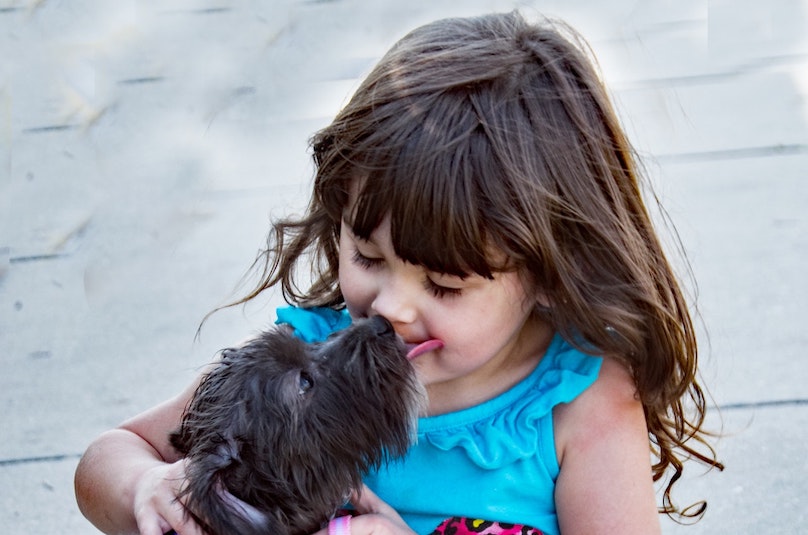

Once the initial introductions are made, the learning process is far from over! Living with dogs is an opportunity for children to develop their skills and learn about their canine companion day after day.
Involve your child in the training process.
All dogs should receive some level of training whether you are bringing home a puppy or a well-mannered adult. Not only does training help your new dog understand what is expected of them, it is also an excellent way to bond with one another.
Ask your professional dog trainer which aspects of training your children can participate in. Involving them in the process will help them learn the importance of respecting their new pet and encourage the dog to bond with the kids.
Never disturb a dog that is eating or sleeping.
Children want to take part in everything their new dog does. While they may mean well, startling a sleeping dog or disturbing one that is eating could end in disaster. Teach your child to give the dog space during these times.
Teach your child to read canine body language.
Dogs rarely (if ever) snap without warning, but many people – especially children – miss the signals. Teach your kids to watch for the signs of distress such as rigid or tucked tail, flattened ears, hunched posture, bared teeth, etc.
Be sure they know never to corner a dog or stare into its eyes.
Never leave children and pets unattended.
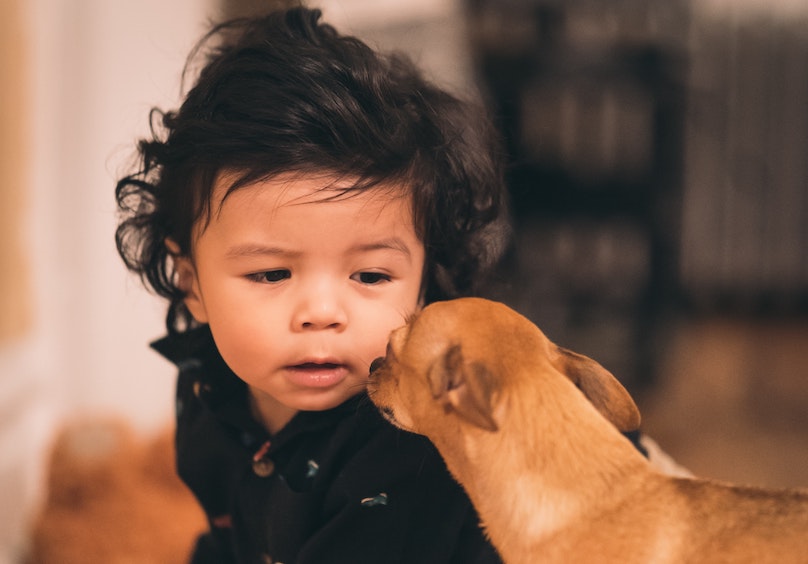

According to Best Friends Animal Society, no child under the age of six should be left alone with a dog – even for a minute! Kids can accidentally trip, fall, or otherwise frighten a dog into biting. Accidents happen, so be sure to protect your children and your dog at all times!
Introducing Dogs To A New Baby
For those expecting a new mini-human, the rules of safe introductions are a bit different. While acclimating dogs and older children involves preparing the child, introducing dogs and babies is all about preparing the dog.
Consider a refresher obedience course.
Even if your dog graduated from puppy school, it never hurts to run them through a refresher course – especially when a major life change is on the horizon. Perhaps you have fallen off with your commands or gotten lax about allowing your pooch on the furniture.
The time to prepare for a new baby should always be sooner rather than later.
Crate train (if you haven’t already).
Crate training is common in puppies and new dogs, but many owners discontinue the practice once they develop a reliable routine. Reintroducing your dog to their crate is a good idea when a baby is on the way.
New babies bring excitement and lots of house guests. The crate will help keep your dog safe through the chaos, giving you peace of mind and the pup a private retreat when things get overwhelming.
Practice body handling.
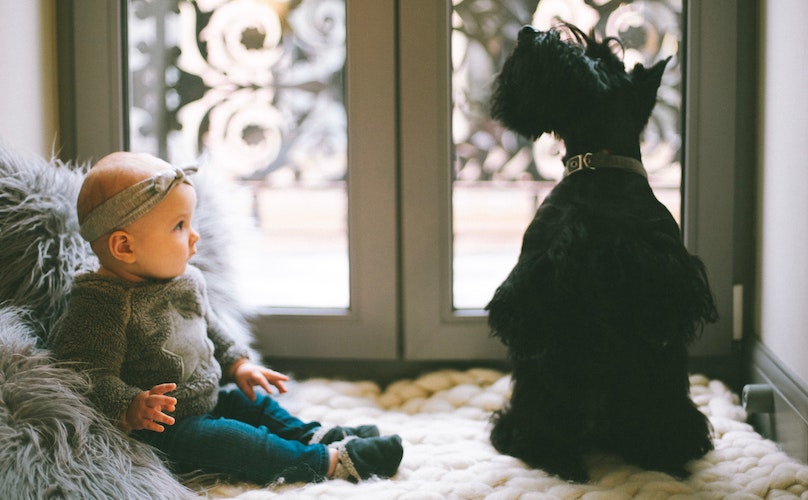

Babies learn about the world through touch. Despite your best efforts, there may come a time when your toddler yanks the dog’s tail or accidentally pokes an eye.
The best way to prevent these situations from ending badly is to prepare your dog with body handling techniques. Touch them from head to toe. Gently tug their ears and hold their paws in your hands. Lift their tail and move it from side to side. Each time your dog calmly allows you to manipulate their body, reward them with a treat.
Bring home baby blankets from the hospital.
Once the little one is born, bring home clothes or linens carrying his or her scent so the dog can get used to the idea of a new arrival. Some parents allow the dog to sleep with the baby blankets before and after the child comes home.
Don’t force it.
Allow your dog to approach and investigate the baby in their own time and on their own terms. If possible, make the introduction during a time when the baby is sleeping and the house is calm and quiet.
Stay calm, happy, and relaxed during greetings.
Allow your dog to sniff the baby’s feet and gently praise them for good behavior. Keep intros short at first so the dog can gradually get used to their new brother or sister.
Featured image via Oleksandr Pidvalnyi
Looking For More Posts Like This?
How Do You Introduce Your New Dog To Your Old Dog?
How Do You Introduce Your New Dog To Your Cat?
How Do You Introduce Your Dog To Your New Partner?



